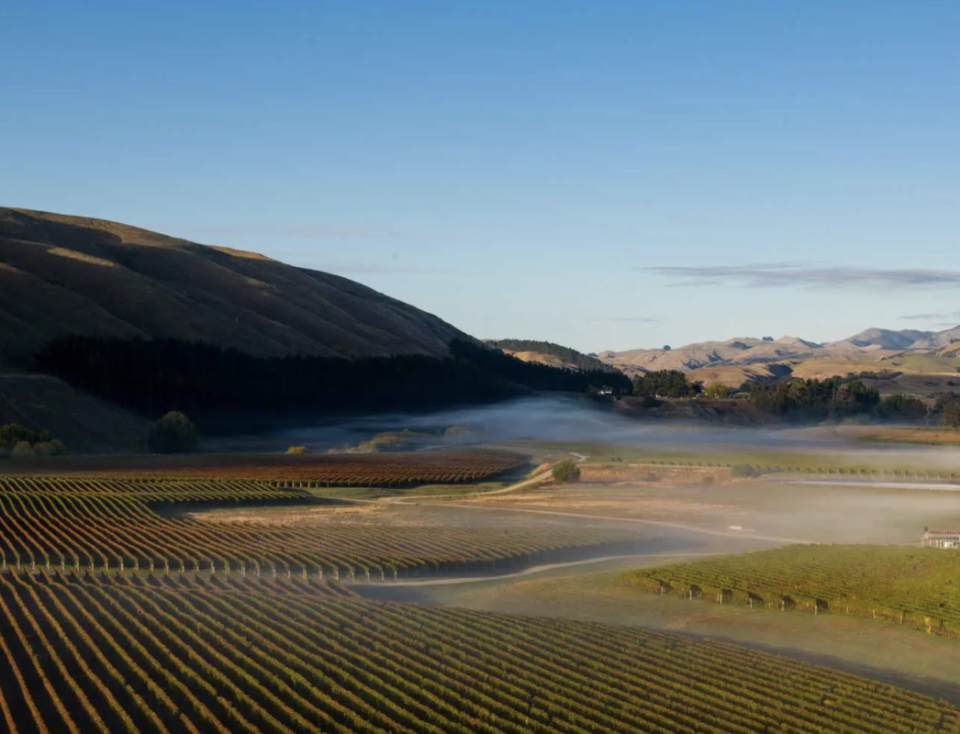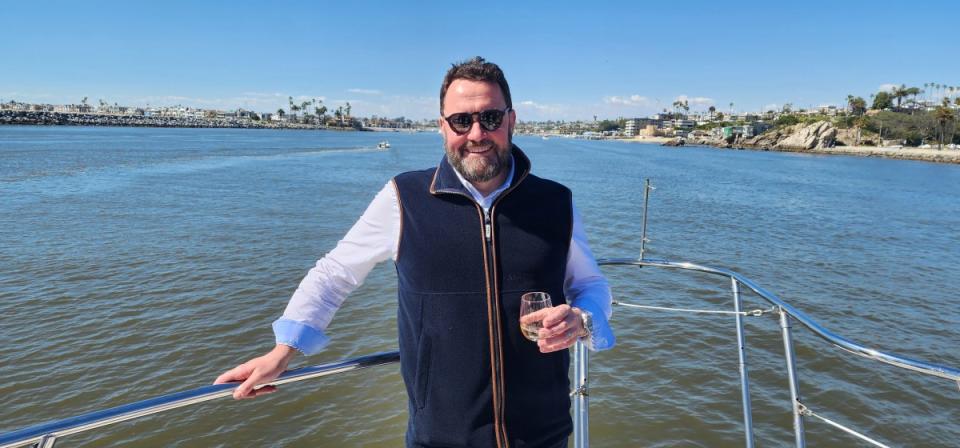Despite the heavy rain the day before, fortune smiled upon us as the sun emerged. Against this backdrop of blue skies, we celebrated the 25th anniversary of Craggy Range Winery with a tasting of wines from three decades, followed by a golden hour boat ride around Newport Beach.
Twenty-five years may not seem old for a winery, but in New Zealand it is. Craggy Range was founded in 1999 by Terry Peabody, an Australian businessman with a passion for wine, and his wife Mary. They set out to produce world-class wines that would showcase the unique terroir of New Zealand. Since its inception, Craggy Range has pushed the boundaries of winemaking in New Zealand, seeking out the best vineyard sites across the country’s North Island.
Craggy Range’s journey began with the release of its inaugural vintage in 2000 under the guidance of renowned winemaker, and American, Doug Wisor. Julian Grounds was the second winemaker at Craggy Range, beginning in 2019. Ben Tombs joined Craggy Range in 2021 and in November 2023 became Chief Winemaker and the third winemaker in Craggy Range’s history.
The winery’s first vineyard, Gimblett Gravels, was established in 2000 in the Hawke’s Bay region, known for its gravelly soil and ideal conditions for growing Bordeaux grape varieties such as Merlot, Cabernet Sauvignon, and Syrah. The soil consists of medium-sized greywacke stone, silt, and sand and results in rich, ripe, elegantly structured wines with a distinctive mineral dusty character called “Gimblett Dust”. The Gimblett Gravels, with a long growing season, is the warmest and driest area in New Zealand.

Courtesy of Craggy Range
The winery’s second vineyard, Te Muna Road, was established in 2002 in the Martinborough District. Two distinct terraces make up the vineyard. The upper terrace is comprised of alvi-fulvic soils that are more than 20,000 years old. The lower terrace has younger stony soils mixed with limestone. Pinot Noir is planted on the upper terrace and Sauvignon Blanc is planted on the lower terrace. Over the years, the winery expanded its vineyard holdings to include additional sites in Marlborough and Canterbury, each chosen for its unique terroir and potential to produce exceptional wines.
Through the lens of a vertical tasting of wines from three decades (the 2000s, 2010s, and 2020s), we were able to gain insights into the winery’s evolution over time.
The journey began with the Craggy Range Aroha (“love”) Pinot Noir from Martinborough. The 2006 vintage, with subtle black cherry and rose notes, and more dominant savory mushroom and earth notes, is still alive and bright and drinking beautifully. The 2014 vintage offers depth and complexity with layers of dark fruits, dark roses, and dried herbs. The 2019 offers cherry, blueberry, lavender, and herbal notes, vibrant acidity, and velvety texture.
The next flight was the Craggy Range Le Sol (“the soil”) Syrah from Gimblett Gravels. Syrah from New Zealand is a more savory and fresh style of Syrah. The 2002 vintage revealed a savory flavor with blackberry, blueberry, menthol, and white pepper notes whereas the 2009 vintage offered more violet aromas, as well as black cherry, blueberry, licorice, and wild herb notes. The 2020 vintage, which was made with more whole berries, as well as French and American oak and concrete, is textured with red and blue fruit, savory herbs, and graphite notes.
The final flight was the Craggy Range Sophia Gimblett Gravels. Named after the Greek goddess of wisdom, or perhaps the actress Sophia Loren, Sophia is a Merlot-dominant Bordeaux blend. The 2021 vintage (61% Merlot, 23% Cabernet Franc, 14% Malbec, and 1% Cabernet Sauvignon) with black fruit, herbal, and menthol aromas, still has body and texture with softened tannins. The 2013 vintage (63% Merlot, 19% Cabernet Sauvignon, and 18% Cabernet Franc), with notes of blueberry, eucalyptus, thyme, and rosemary, is drinking well now. The 2020 vintage (65% Merlot, 22% Cabernet Franc, and 13% Cabernet Sauvignon) is still young but showing beautifully with fruit, spice, herbal, and graphite aromas and good acidity.

Photo by Allison Levine
After tasting wines from the past 25 years, we ventured out to a boat for a cruise around Newport Beach. While on the boat, enjoying the golden hour, we sipped three current releases – the 2023 Craggy Range Sauvignon Blanc, Te Muna, Martinborough, the 2021 Craggy Range Chardonnay, Kidnappers, Hawke’s Bay, and the 2021 Craggy Range Te Kahu Gimblett Gravels, Hawke’s Bay.
Reflecting on three decades of wine production, Craggy Range is now looking to the future. In addition to a new winemaker in 2019 bringing a fresh perspective, there is also a renewed focus on sustainability. Embracing organic viticulture and environmental stewardship, the winery redoubled its efforts to minimize its carbon footprint and preserve the natural beauty of the land for future generations. Craggy Range has embraced organic viticulture practices in many of its vineyards. This involves eschewing the use of synthetic pesticides, herbicides, and fertilizers in favor of natural alternatives, resulting in healthier vineyards and wines. The winery is actively involved in restoring native flora and fauna to its vineyard sites, which includes planting native trees, shrubs, and grasses to create habitat for local wildlife, as well as implementing conservation measures to protect endangered species and preserve biodiversity. Craggy Range employs water conservation measures to minimize water usage in the vineyard and winery through drip irrigation systems and rainwater harvesting and recycling. The winery is committed to reducing its carbon footprint through various energy-efficient practices in the winery and vineyard, such as using renewable energy sources like solar power, optimizing transportation and logistics to minimize fuel consumption, and reducing waste generation through recycling and composting programs. Lastly, Craggy Range is continuously seeking ways to reduce the environmental impact of its packaging. This includes using lighter-weight glass bottles to reduce carbon emissions associated with transportation, as well as exploring alternative packaging materials such as recycled cardboard and compostable plastics.
As Craggy Range looks ahead to the future, the goal is to make the best wines that they can. After tasting wines from 20+ years ago, it is obvious that they are on the right track.

Leave a Reply